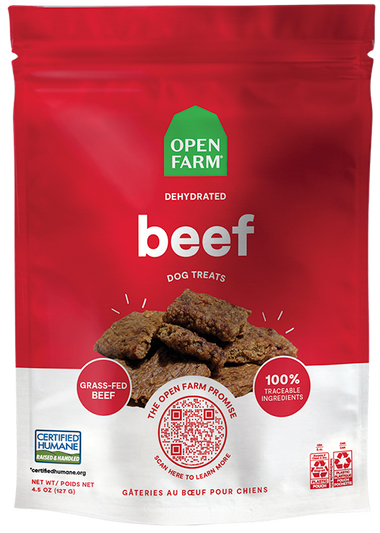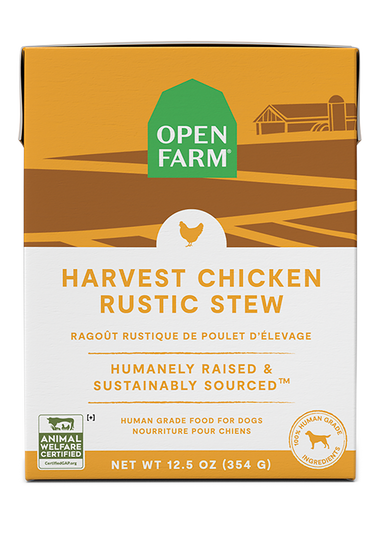Walking your dog is part of your daily responsibilities as a pet owner. For most dog owners, walking your pet requires putting them on a leash to prevent them from running into traffic, getting lost or interacting with other people’s pets.
If your new puppy or adopted dog isn’t leash trained, it can cause you and your dog to feel stressed and anxious when you need to take them on a walk. Knowing how to leash train your dog can help keep your dog safe and make daily walks an activity to look forward to.
How to Leash Train Your Puppy
Leash training your pup requires just a few simple, consistent steps. If you plan on training your dog with food, have a few healthy dog treats or premium beef dog food kibble on hand to reward them for good behavior.
Introduce Your Puppy to the Leash
When leash training your dog, introduce them to the leash, harness or collar. Before taking them outside, put these items inside your home for short periods. Aim for times when you are playing with your pup and give them treats so they connect these items with food. This builds up your dog’s positive association with the leash, making it easier to train them once you take it outdoors.
Teach Your Dog a Cue
Part of leash training is teaching desired behavior through cues. Choose a cue, such as a clicking noise or a simple, one-syllable word like “yes.” When your puppy has their collar and leash on, initiate your cue. As soon as your dog turns to look at you, give them a treat, like Dehydrated Beef Dog Treats. After a few rounds of this activity, you should notice your dog walking over to you as soon as you use the cue.
Make the Puppy Come to You
The next phase of leash training requires you to build upon the cue activity. As your dog approaches you after using your cue, back up a few paces and give your dog a treat when they get to you. The goal is to continue this pattern until your dog walks with you for several steps. Once you and your pup accomplish this task, you are ready for the next training task.
Practice and Repeat
Keep practicing until your dog becomes more comfortable walking alongside you with their leash and collar on. Try this activity several times in a distraction-free space inside your home, offering praise and treats each time your pup does a good job.
When you and your dog are ready, take the activity outside. Your puppy will likely become distracted by the sights and sounds of the outdoors, so remain patient and keep your walks short. If your dog becomes distracted or begins to pull or lunge, hold onto the leash and initiate your cue, stepping away slightly.
When your dog follows you, reward them with a treat, such as a spoonful of healthy wet dog food you keep in a baggie for walks.
Correcting Unwanted Behaviors
During leash training, you will likely run into unwanted behaviors from your dog. If you’re training a puppy, it may have a short attention span that only lasts a few seconds. Keep your training sessions short and stop when the puppy seems mentally tired.
For other unwanted behaviors, try the following:
Pulling
If your puppy pulls at the leash, stand completely still and do not move until they return to you. Avoid yanking or jerking the leash, and do not drag your dog with you. When they return, give them a treat.
Barking
Barking at other animals during a walk is a normal response, but it is often elevated when a dog lacks exercise or mental stimulation. Ensure your pup gets daily exercise and mental stimulation at home to minimize this issue.
If they bark when leash training, use the same procedure as pulling; stand still and create distance, using the cue to call the dog to you. When they follow directions, reward them with a treat.
Lunging
If your dog begins to lunge on your walks, be proactive. Watch for signs your dog is about to lunge and divert its attention before it happens with a treat. Also, try to create distance between the lunge target and your pup to discourage the behavior. Avoid pulling on the leash or harness, as it could injure your pet.
Reward Your Pup With a Nutritional Meal
Leash training is a simple, repetitive task you can accomplish with the right attitude and consistency. It is vital to leash train your dog to prevent unwanted behaviors and accidents and make walks enjoyable for you and your pet.
Support your leash training sessions with humanely sourced dog treats and foods from Open Farm. We carry dehydrated beef, chicken, and turkey treats perfect for dogs and puppies learning to walk on a leash. Our lamb, beef, and fish-based dog food are made with sustainable ingredients and make the ideal daily reward for your puppy after you come inside from a successful walk.








































 Sign In
Sign In
 Create Account
Create Account














